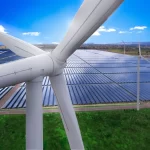The European energy landscape is undergoing a transformative shift towards climate neutrality, emphasizing the integration of renewable energy sources, particularly in the hydrogen sector. The recent Progress Report on Interlinked Modelling (ILM) by ENTSO-E and ENTSOG highlights significant strides in integrating electricity and hydrogen systems. This blog delves into the report’s key findings, methodologies, and future recommendations, showcasing the vital role of interconnected energy systems in achieving Europe’s decarbonization goals.
Understanding Interlinked Modelling (ILM)
Interlinked Modelling is a comprehensive approach to energy system planning that considers the mutual influences of natural gas, hydrogen, and electricity sectors. The ILM aims to ensure that infrastructure projects are evaluated with a holistic perspective, optimizing development and sustainability within the European Union’s energy framework.
Scope and Background
The report outlines the necessity of a dual infrastructure assessment methodology for Ten-Year Network Development Plans (TYNDPs). This approach was mandated by European regulations to include both electricity and gas market models, ensuring a consistent evaluation of projects across sectors. Over the years, the ILM has evolved to incorporate hydrogen infrastructure, reflecting Europe’s shifting energy priorities.
Key Objectives
- Integration of Power and Hydrogen Systems: The report explores how electrolysers powered by low-carbon electricity can bridge the gap between these sectors.
- Optimization of Shared Infrastructure: Emphasizes the potential of shared renewables for hydrogen production and their contribution to the power system.
- Socio-Economic Welfare Assessment: Evaluates the social and economic impacts of infrastructure projects involving electricity grids, electrolysers, and hydrogen pipelines.
- CO2 Emission Reduction: Assesses the effect of projects on CO2 emissions and Renewable Energy Source (RES) integration.
- Recommendations for ILM Development: Provides guidelines for further development and utilization of the Interlinked Model.
Methodological Advancements
The report details significant methodological advancements, including the development of a joint electricity and hydrogen model. This model simplifies complex infrastructure interactions, making it possible to simulate and analyze the interdependencies of these systems effectively.
Electricity and Hydrogen Topologies
The ILM2024 model integrates electricity and hydrogen topologies, representing the infrastructure and operational characteristics of both sectors. This integration is crucial for understanding how changes in one sector impact the other. For example, the model considers electrolysers connected to both the electricity market and dedicated renewables, ensuring that only zero-carbon electricity is used for hydrogen production.
Climatic and Commodity Considerations
The report emphasizes the importance of climatic variability in renewable energy production. By selecting representative climatic years, the model can accurately simulate renewable generation patterns. Additionally, the ILM considers commodity prices and emission factors, ensuring a realistic assessment of the energy market dynamics.
Insights and Recommendations
The report provides several key insights, particularly in the context of green hydrogen production. It highlights the need for shared RES management and the importance of aligning RES utilization with decarbonization goals. Additionally, it discusses the impacts of thermal power plants on hydrogen production, recommending methodologies to ensure hydrogen remains carbon-free.
Future Perspectives
Looking forward, the report envisions further refinement of the ILM, incorporating feedback from stakeholders to enhance model accuracy and applicability. It anticipates the ILM will play a critical role in future TYNDPs, helping to shape a sustainable and integrated energy future for Europe.
Conclusion
ENTSO-E and ENTSOG’s Progress Report on Interlinked Modelling marks a significant milestone in the journey towards a climate-neutral Europe. By integrating electricity and hydrogen systems, the ILM provides a robust framework for evaluating infrastructure projects, optimizing energy costs, and reducing CO2 emissions. As Europe continues to transition towards sustainable energy, the ILM will undoubtedly be a crucial tool in achieving its decarbonization targets.




